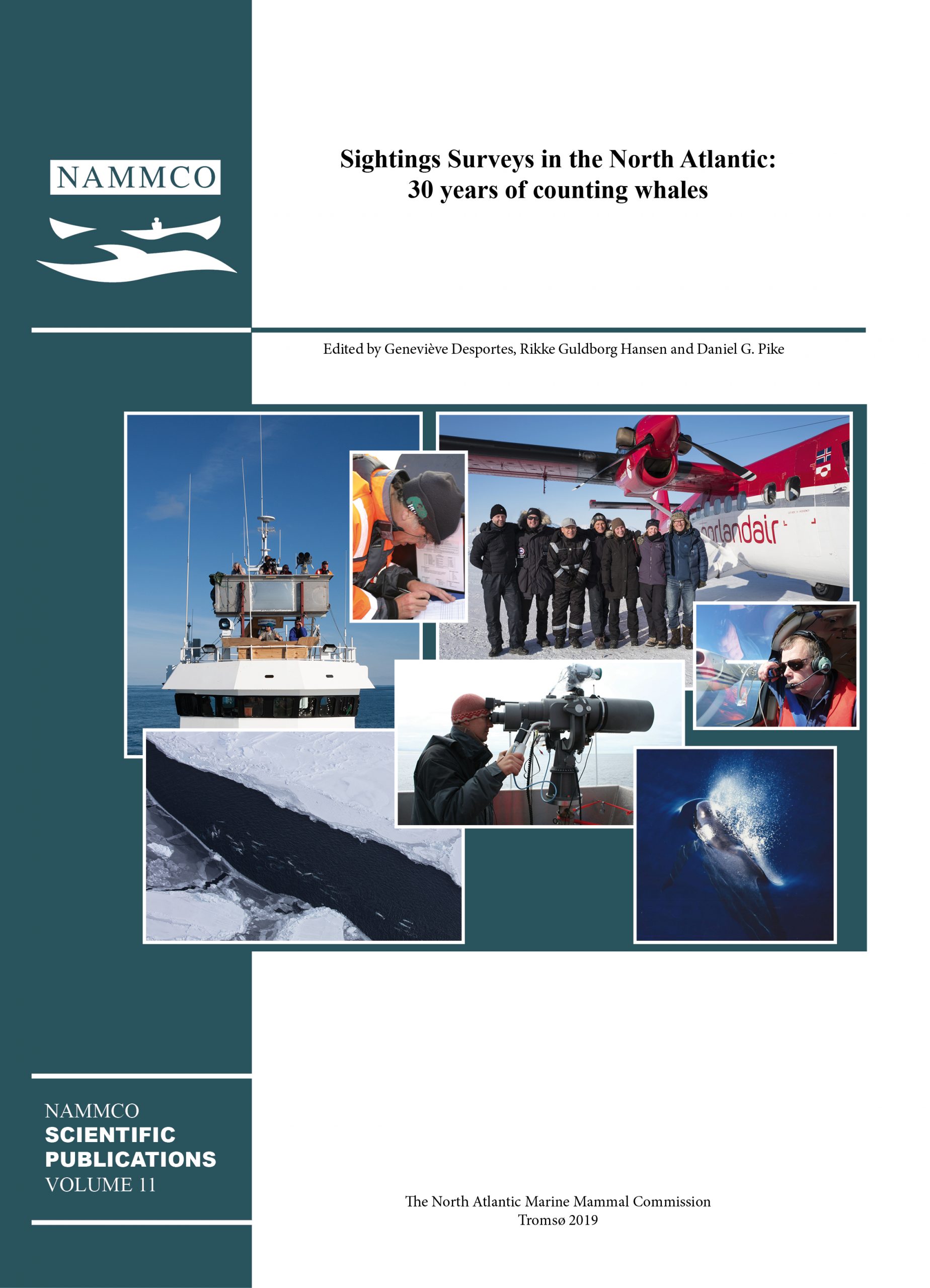24 July 2020: New Article on Cetacean Abundance Estimates from 2014-2018 Norwegian Ship-board Surveys
We are happy to announce that the 8th article in Volume 11 of the NAMMCO Scientific Publications Series – Sightings Surveys in the North Atlantic: 30 years of counting whales has now been published.

The article, Estimated Abundances of Cetacean Species in the Northeast Atlantic from Norwegian Shipboard Surveys conducted in 2014–2018, was authored by Deanna M. Leonard and Nils I. Øien.
ABSTRACT
A ship-based mosaic survey of Northeast Atlantic cetaceans was conducted over a 5-year period between 2014–2018. The area surveyed extends from the North Sea in the south (southern boundary at 53oN), to the ice edge of the Barents Sea and the Greenland Sea. Survey vessels were equipped with 2 independent observer platforms that detected whales in passing mode and applied tracking procedures for the target species, common minke whales (Balaenoptera acutorostrata acutorostrata). Here we present abundance estimates for all non-target species for which there were sufficient sightings. We estimate the abundance of fin whales (Balaenoptera physalus) to be 11,387 (CV=0.17, 95% CI: 8,072–16,063), of humpback whales (Megaptera novaeangliae) to be 10,708 (CV=0.38, 95% CI: 4,906–23,370), of sperm whales (Physeter macrocephalus) to be 5,704 (CV=0.26, 95% CI: 3,374–9,643), of killer whales (Orcinus orca) to be 15,056 (CV=0.29, 95% CI: 8,423–26,914), of harbour porpoises (Phocoena phocoena) to be 255,929 (CV=0.20, 95% CI: 172,742–379,175), dolphins of genus Lagenorhynchus to be 192,767 (CV=0.25, 95% CI: 114,033–325,863), and finally of northern bottlenose whales (Hyperoodon ampullatus) to be 7,800 (CV=0.28, 95% CI: 4,373–13,913). Additionally, our survey effort in the Norwegian Sea in 2015 contributed to the 6th North Atlantic Sightings Survey (NASS) and the survey was extended into the waters north and east of Iceland around Jan Mayen island. This NASS extension, along with our Norwegian Sea survey in 2015, was used to estimate the abundance of fin whales, humpback whales, and sperm whales. All estimates presented used mark-recapture distance sampling techniques and were thus corrected for perception bias. Our estimates do not account for additional variance due to distributional shifts between years or biases due to availability or responsive movement.
Read the full article here


